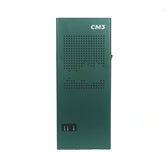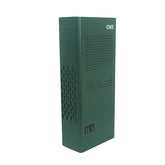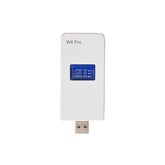AJ Antenna Against GPS Jamming
Even more frightening, many of the data centers housing the servers that run these networks are located in storage areas (where trucks come and go frequently) or near major highways. These are the two most likely places to encounter GPS jammer. In fact, at Orolia, we know from experience and concrete examples that this not only happens...but is relatively common.
It is with these threats in mind that Orolia has developed solutions to protect our customers. Late last year, we announced the release of BroadShield, which uses sophisticated algorithms to interrogate the RF signal consumed by GPS receivers to detect anomalies such as jamming or spoofing. Recently we released a new anti-jamming (AJ) antenna.

The new AJ antenna attenuates or blocks RF signals from near the horizon. The real signal comes from satellites near the zenith. False interference usually comes from the horizon.
A good way to visualize how this works is to stand with your arms outstretched at your sides, parallel to the floor, and lift them up to make a 30-degree angle to the floor. If you're a GPS antenna on the roof of a data center, any RF signals coming from under your arm will be blocked. Since the most common source of interference comes from people trying to evade fleet management tracking systems - in cars, trucks or on the ground - AJ antennas are a very effective way to protect critical networks.
AJ antennas also replace traditional GPS antennas, making them easier to deploy. It requires no special power supply, installation or placement other than the need for a standard antenna. We had the opportunity to test with some customers experiencing GPS outages due to interference and saw significant results.













